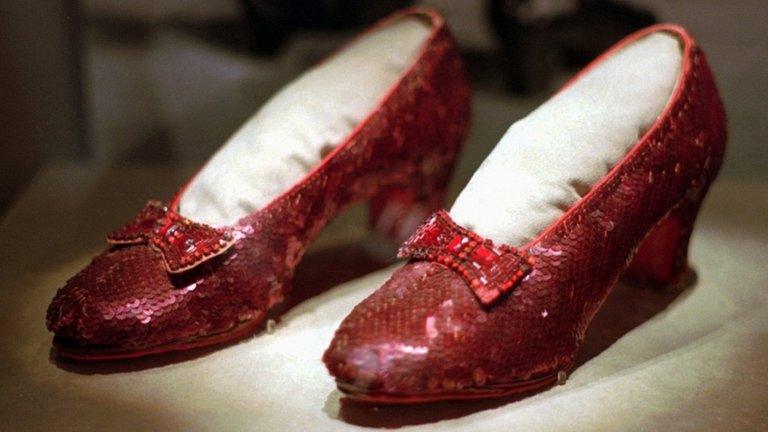Dorothy's Wizard of Oz slippers to be saved after campaign hits $300,000
- Published
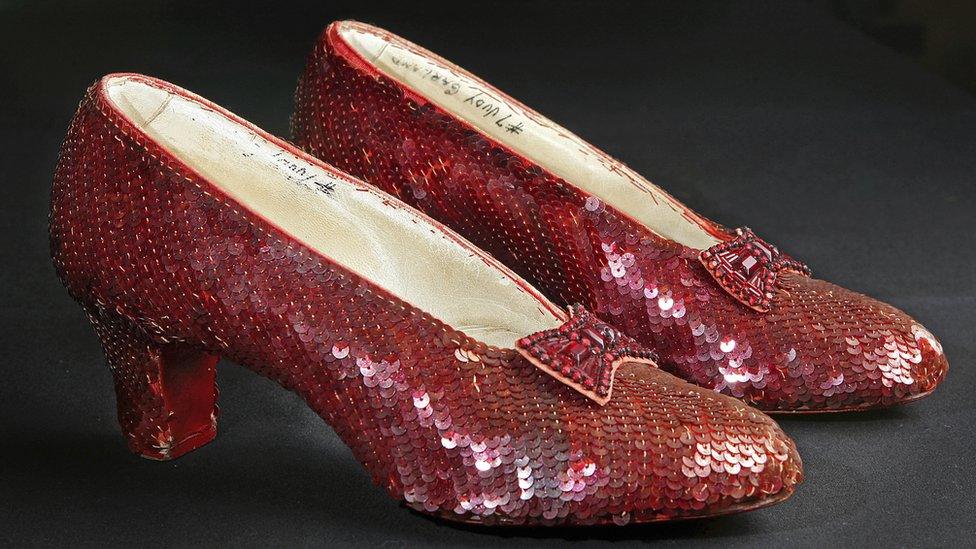
Dorothy's spangly shoes both have Judy Garland's name written inside
A pair of red slippers worn by Dorothy in 1939 film The Wizard of Oz film will be preserved thanks to a $300,000 (£246,000) Kickstarter campaign.
The Smithsonian National Museum of American History had run a campaign, external to save its pair of the famous shoes from deterioration and discolouration.
The slippers are one of the most viewed items at the Washington DC museum.
But age has taken its toll and they have turned from a sparkling red to a dull brown.
Officials at the museum said they reached their goal late on Sunday night thanks to more than 5,300 supporters in 41 countries.
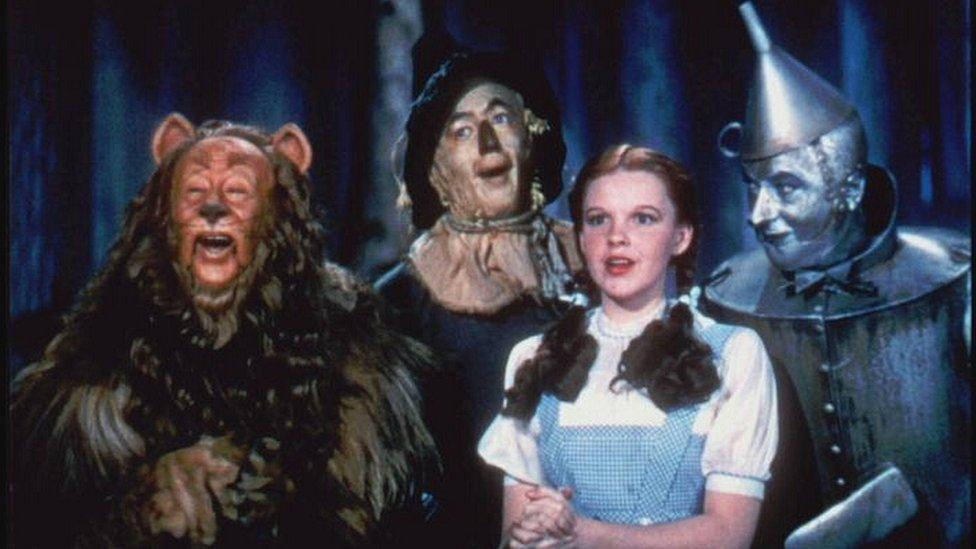
The Wizard of Oz remains one of cinema history's most-beloved films
The campaign started on 17 October and had 30 days to reach its target.
The museum is also planning to announce another fundraising goal shortly involving one of the characters from the famous film.
The funds raised by the Kickstarter campaign will be used for immediate conservation care and a new, state-of-the-art display case designed to protect the slippers from environmental harm and slow their deterioration.
Future plans include moving the ruby slippers into a new exhibition on American popular culture, scheduled to open in 2018.
Anonymous donation
The shoes contain a dozen different materials. The sequins are made of gelatin with a primitive plastic coating, and their red colour has faded because the coating has flaked off, partly due to the effects of light and moisture.
"We're going to have to do a lot of scientific research to come up with a treatment plan that is compatible with all of the different materials," Ms Machado said.
The shoes also include glass beads and red felt on the soles, which was used to muffle their sound when Garland wore them during dance sequences.
They were donated anonymously to the museum in 1979. A number of identical pairs were made with five pairs believed to have survived.

Follow us on Twitter @BBCNewsEnts, external, on Instagram, external, or if you have a story suggestion email entertainment.news@bbc.co.uk, external.
- Published19 October 2016
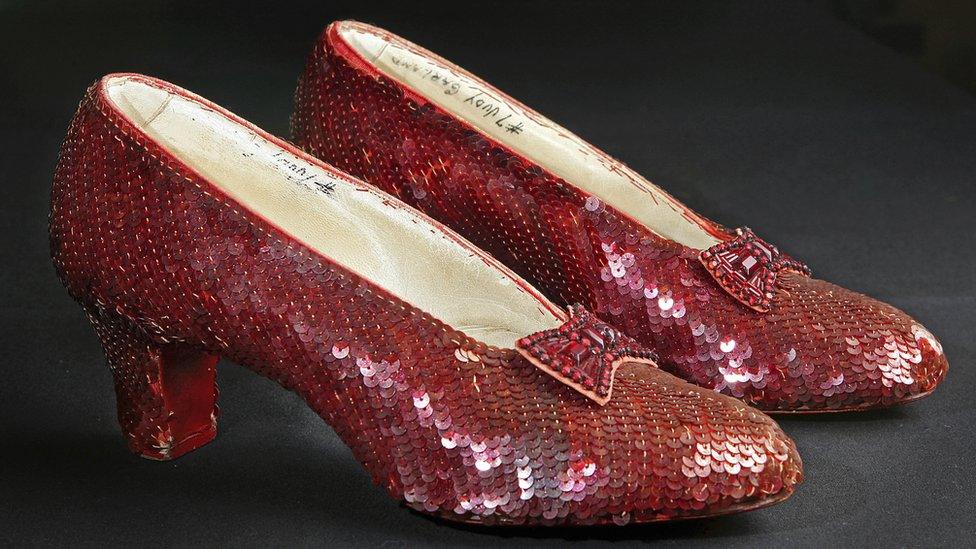
- Published25 November 2014
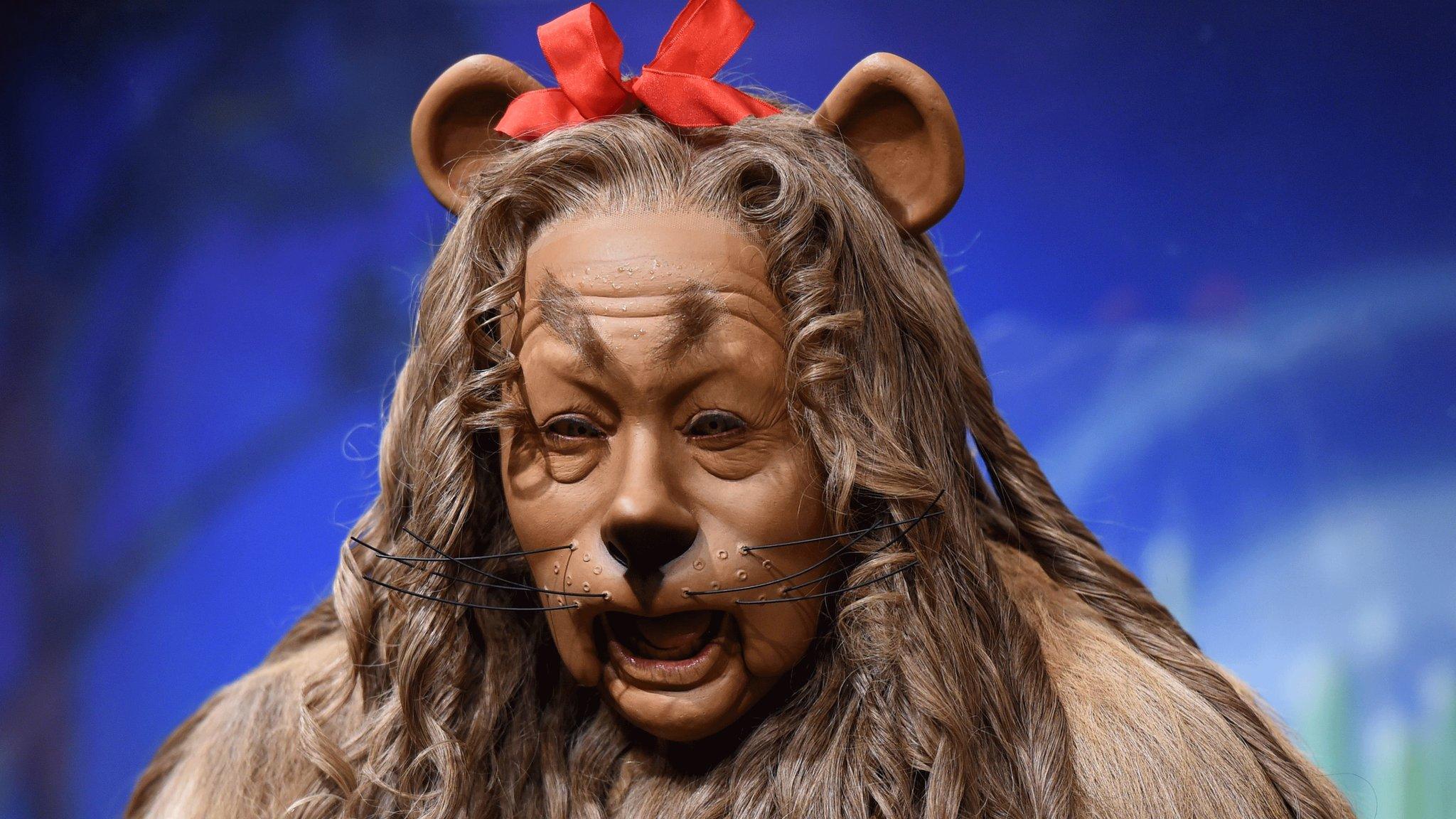
- Published4 October 2012
